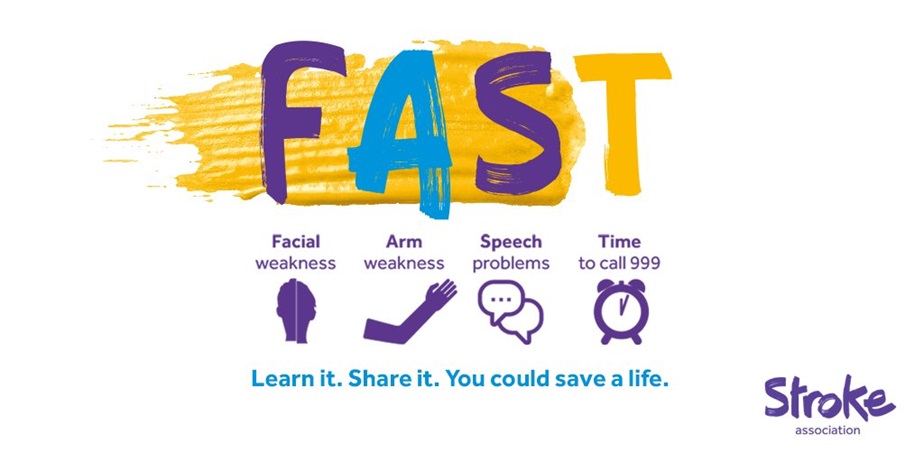Saving precious time for stroke patients: our new thrombectomy service
Stroke is the UK’s fourth biggest killer – over 100,000 people in the UK suffer a stroke every year. Dr Soma Banerjee, head of specialty in stroke medicine, and consultant neuroradiologist, Dr Kyriakos Lobotesis, explain how the Trust’s new mechanical thrombectomy service will help stroke patients get the latest gold standard treatment.
In stroke medicine, we often say time is brain. During an ischaemic stroke – by far the most common type – the blood supply to the brain is blocked by a clot. With millions of brain cells at risk of dying every minute, our first priority is removing that blockage to open up the blood vessel. The faster we can do so, the less likely it is that a patient will suffer long term disability.
Stroke innovations
Stroke treatment has developed significantly in recent years. One innovation was thrombolysis, developed over the last decade or so, whereby a special clot-busting drug is administered to a patient to try and dissolve the problem clot. It quickly became the ‘gold standard’ treatment.
Thrombolysis was a real step forward, and has significantly improved patient outcomes. But in patients with particularly large clots, it doesn’t always work. That’s why, after many years of work and research, including here at Imperial, we’re excited to be using a newer method of removing the clot: mechanical thrombectomy, which is proving even more effective in patients with severe strokes.
The new gold standard
Thrombectomy is a procedure carried out in the radiology department, in a special room called an angiographic suite: instead of seeking to break the clot down using drugs, thrombectomy aims to physically remove it. The minimally invasive technique involves inserting a special device under x-ray guidance into the affected blood vessel. The clot is either removed with a stent – a tiny cage-like piece of equipment which ‘grabs’ the clot – or it’s sucked out with a special aspiration tube.
Developing the perfect ‘clot-grabbing’ device has taken years of fine-tuning. Attached to a wire roughly the thickness of a strand of hair, clinicians have tried stents shaped like brushes, corkscrews, and baskets. What’s been found to have worked best is a cylindrical stent traditionally used to treat patients suffering with an aneurysm, which is when a blood vessel bulges.
Proving the effectiveness of these devices has been a huge step forward in our field. When a major brain artery is blocked – as in 10 per cent of strokes – evidence shows that thrombectomy, as compared to thrombolysis, significantly reduces the risk of long-term brain injury, disability and loss of independence.
What’s more, when thrombectomy is carried out under local anaesthetic, we frequently see real-time improvements in the patient’s condition as we perform the procedure, while they are still on the angiographic table.
Thrombectomy is immensely satisfying to the clinical team, when they change the devastating natural outcome of these patients with a severe ischaemic stroke, especially when the same person can walk out of hospital, independent, perhaps only a few days later, with a procedure that is of relatively low risk. It’s been a real game changer.
A seven-day service
We’ve been offering thrombectomy at Charing Cross Hospital since 2013. This summer, we’re really pleased to have become one of the first Trusts in the UK to offer an extended hours, seven-day service. This means the vast majority of patients who would benefit from it can be treated by thrombectomy – and our aim is to offer a full, 24-hour service as soon as possible.
Delivering such a specialised procedure is a real team effort requiring seamless co-ordination. We’re fortunate at Charing Cross to have a fantastic group of stroke specialists, interventional neuroradiologists, anaesthetists, nurses, therapists, radiographers and others working together to give our patients the best range of treatment and rehabilitation options.
Building on stroke success
The strength of our team was made possible by the formation of our hyper acute stroke unit in 2010, one of eight in London, which now sees around 1,700 patients a year. The unit, staffed by a team of 50, brings specialist staff together in one place and acts as a hub for stroke treatment. This streamlined approach has been shown to improve patient outcomes, as well as reducing the amount of time a stroke patient needs to spend in hospital.
Stroke care has changed significantly in the last decade, and it’s so rewarding to know that patients are seeing the benefits of these changes. Unfortunately, there’s a national shortage of the interventional neuroradiologists needed to perform cerebral thrombectomy. We are working hard to address this challenge, with interventional neuroradiologists now being trained in our neurointerventional unit.
As we further develop our stroke service, we’ll continue to seek out ways to improve what we offer our patients. We’re proud to be at the forefront of the stroke care revolution, offering patients in north west London the gold-standard treatment.
Learn more about our stroke service.
Our stroke service is full of opportunity – find out how you can join.
Share this post online to join the conversion about stroke.
To learn the signs of stroke, think FAST — graphic courtesy of the Stroke Association.

